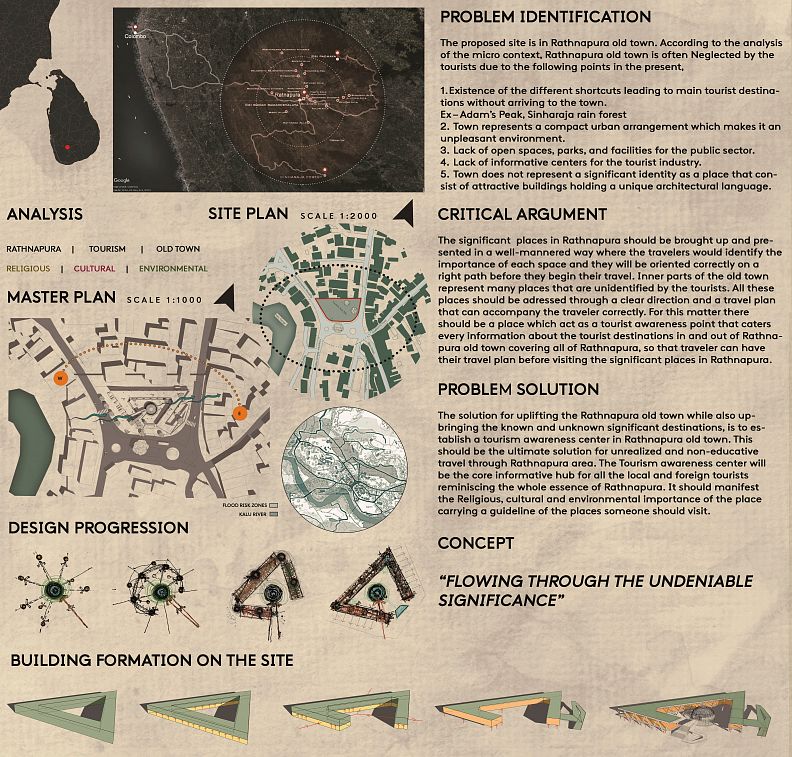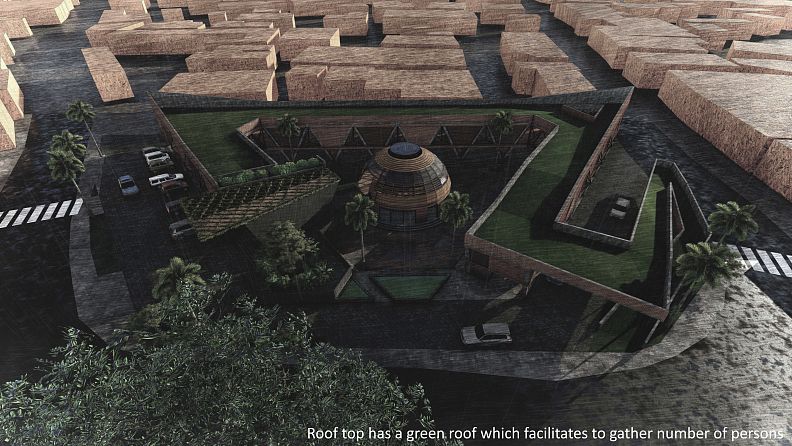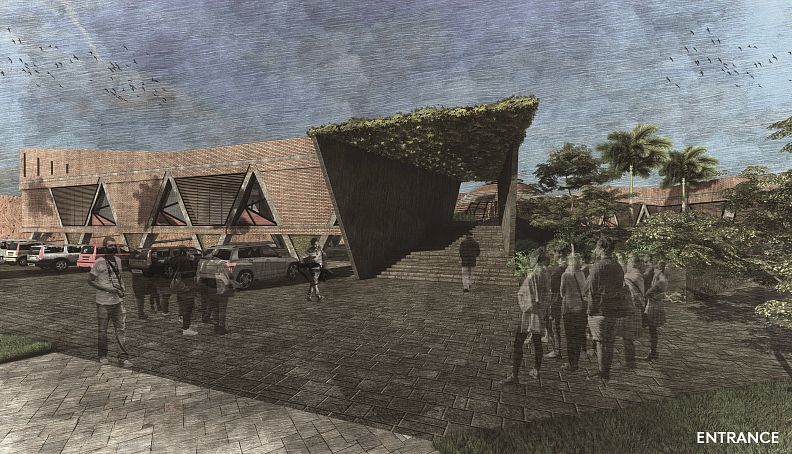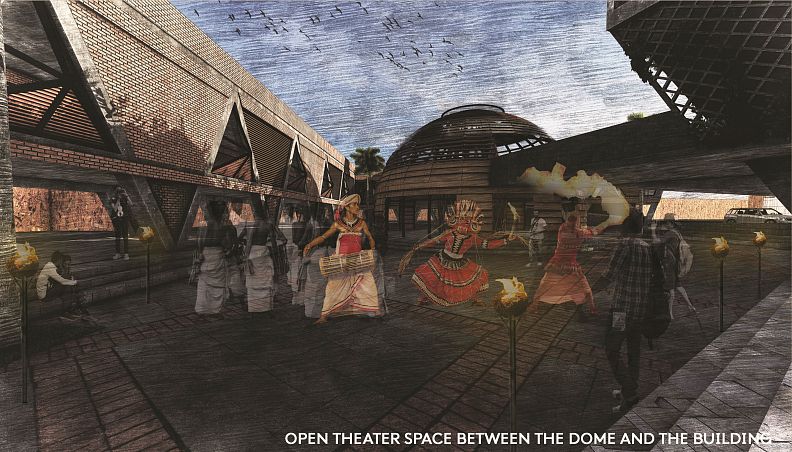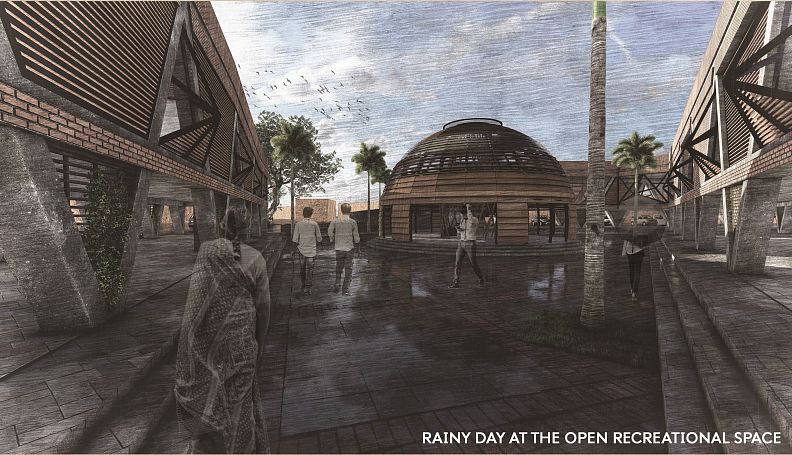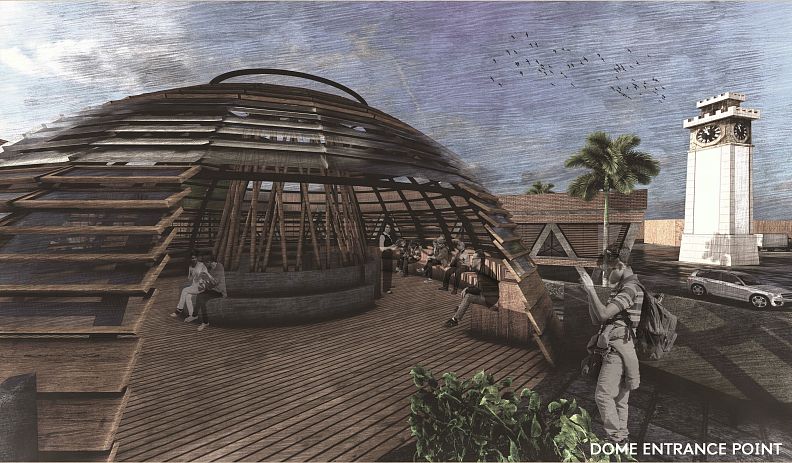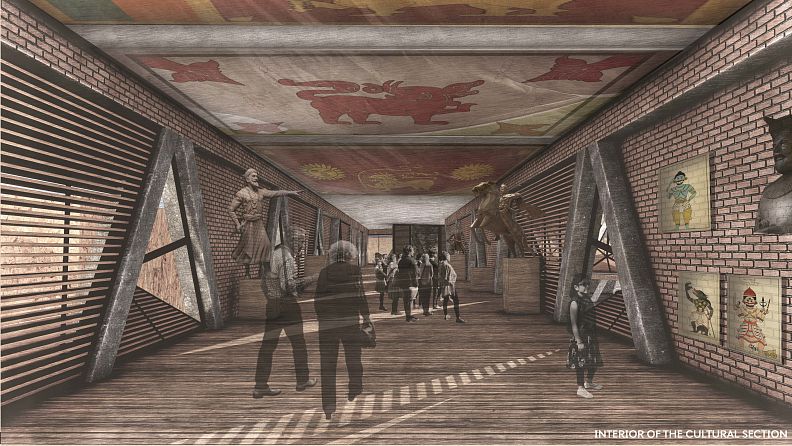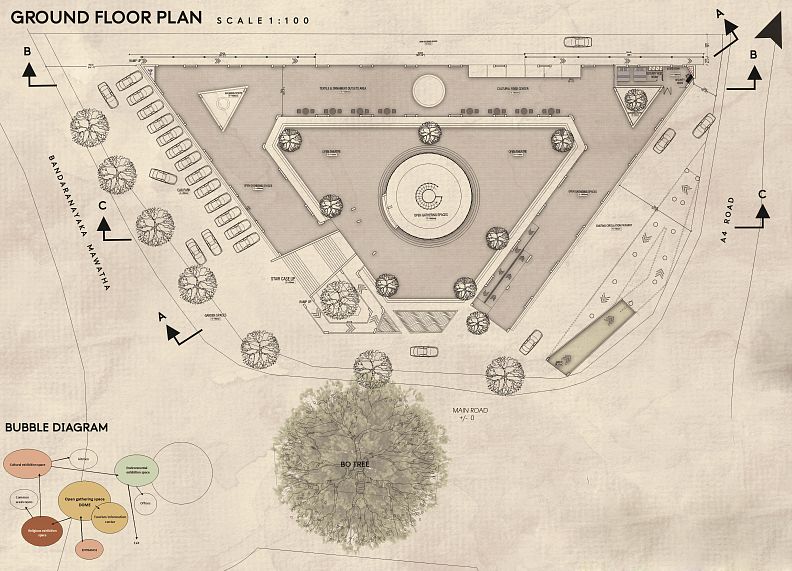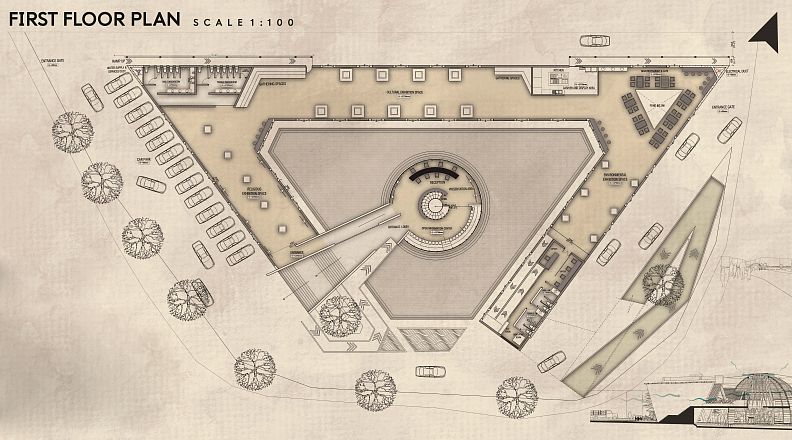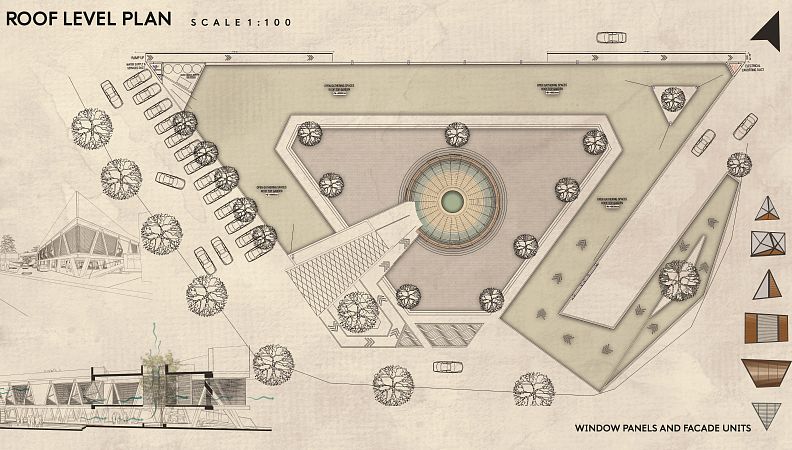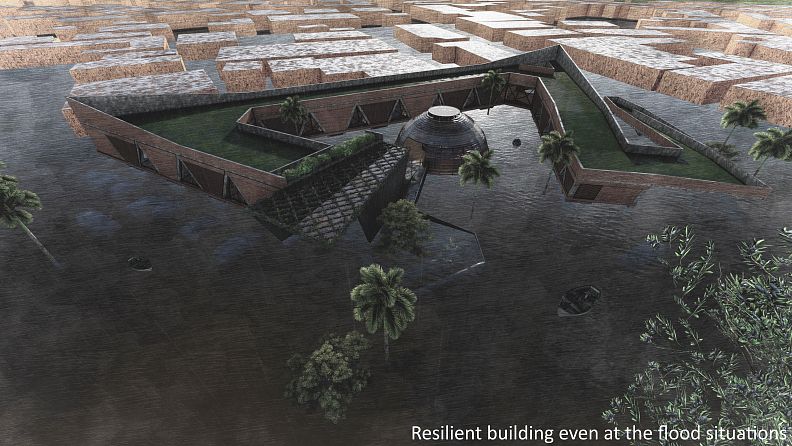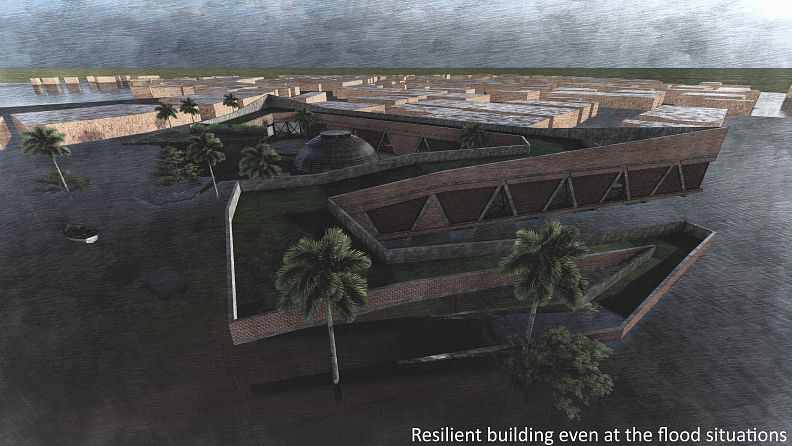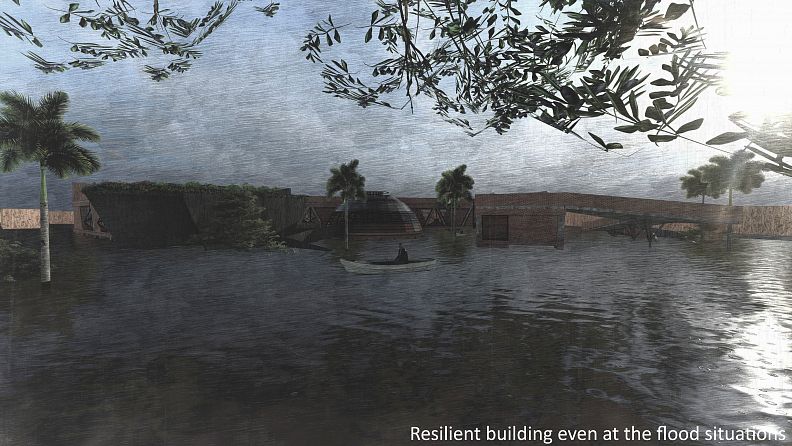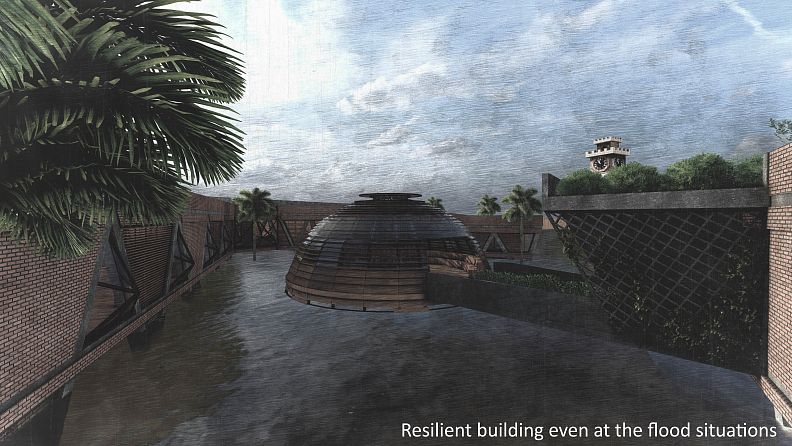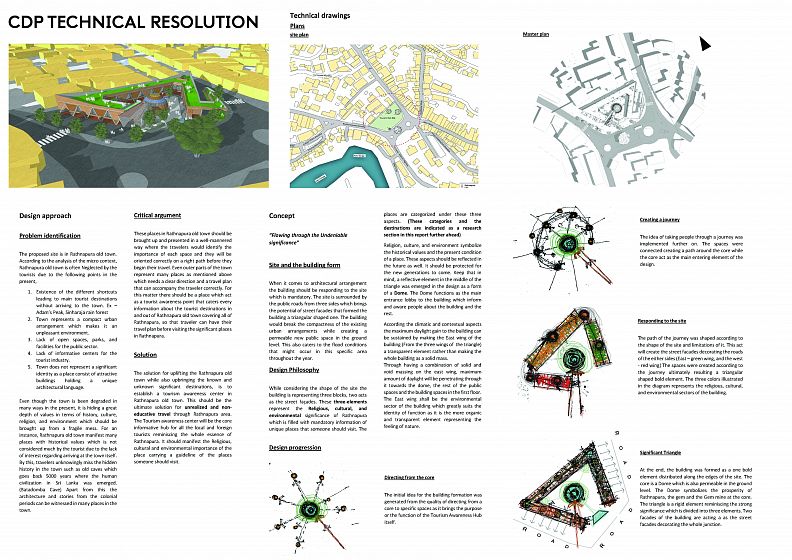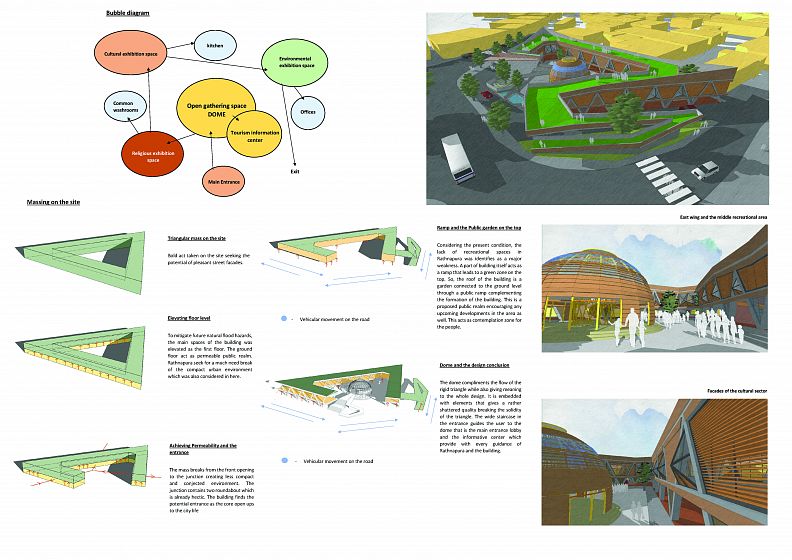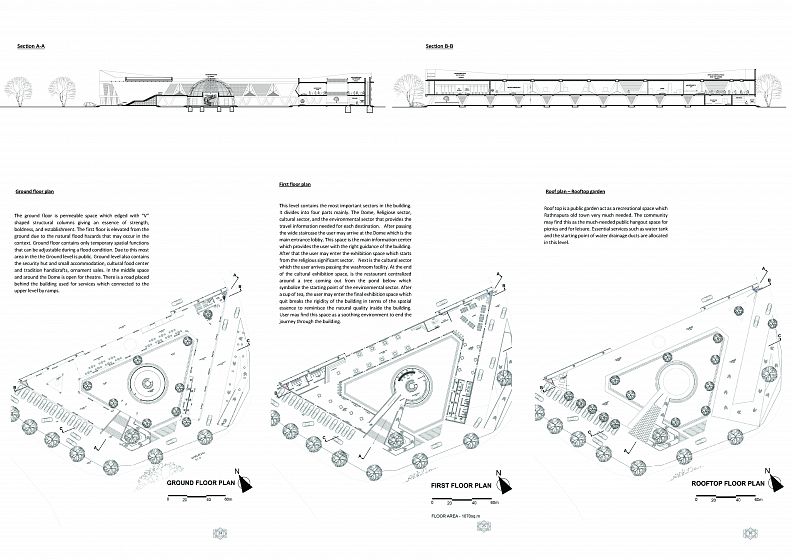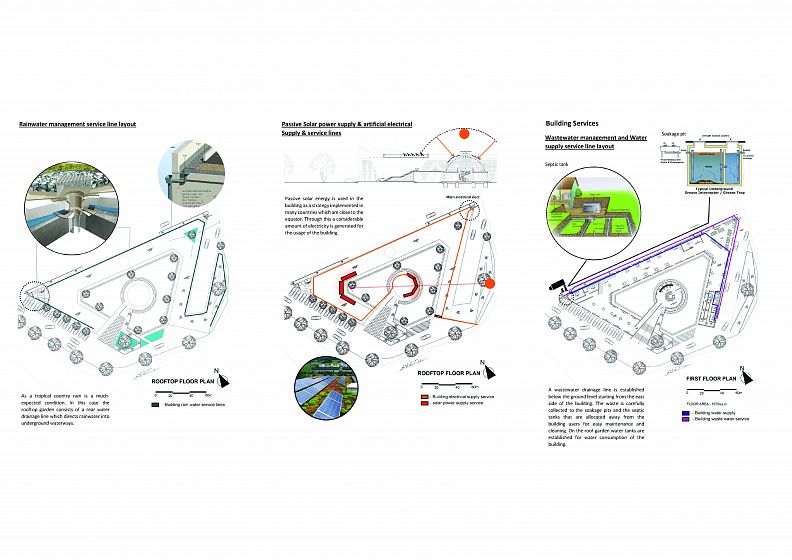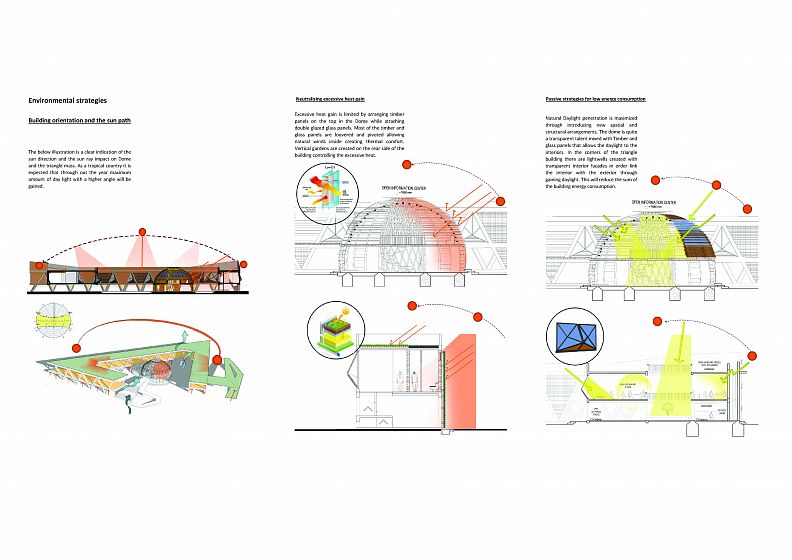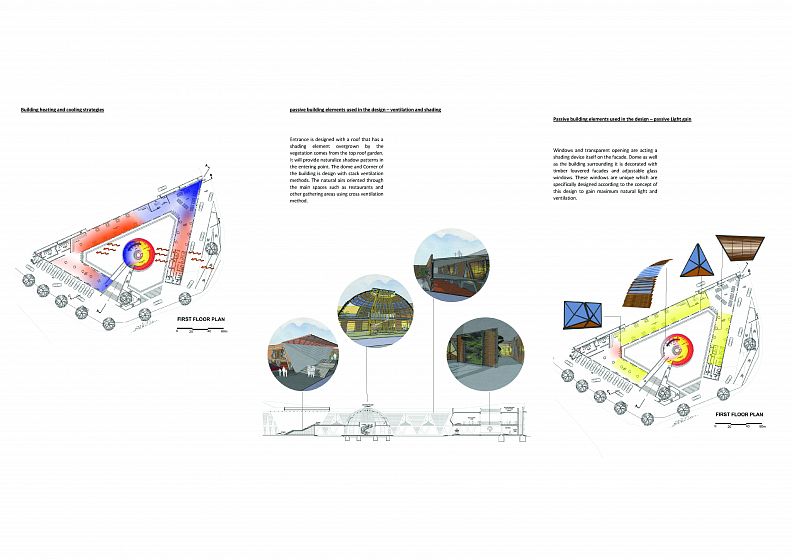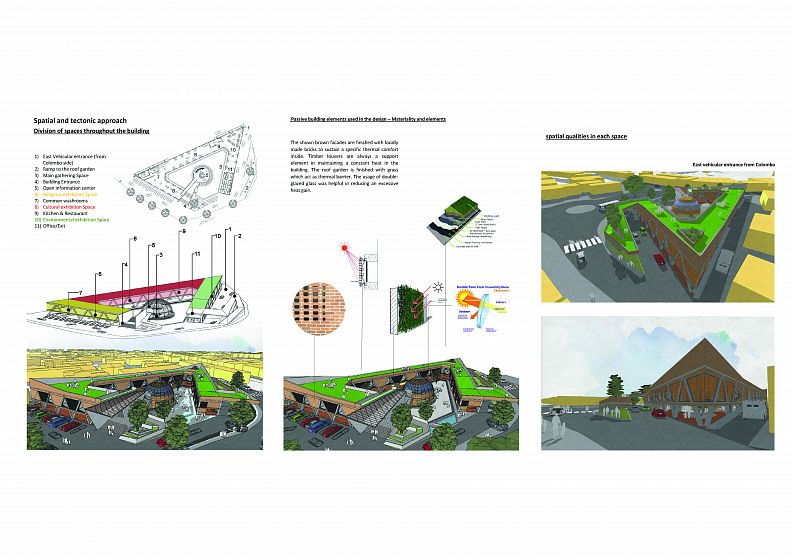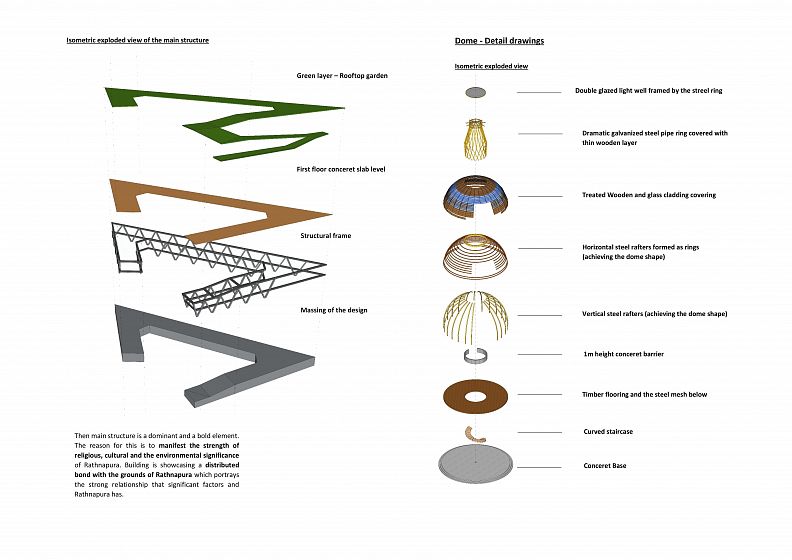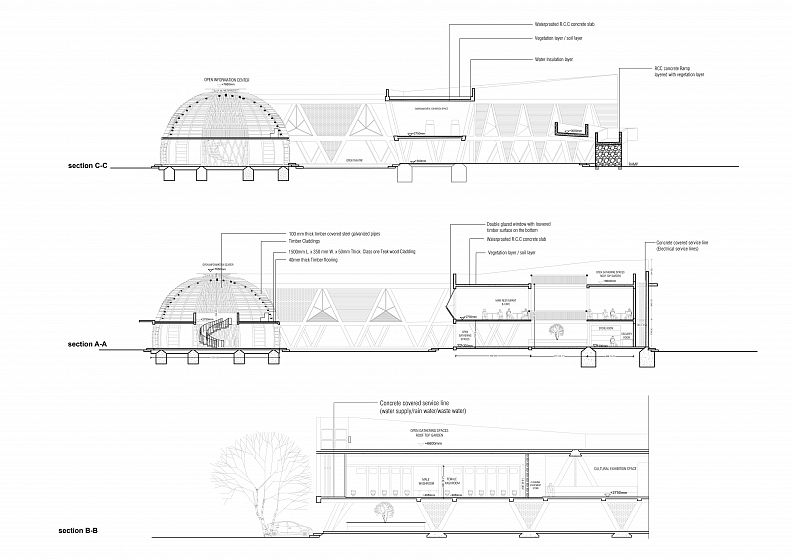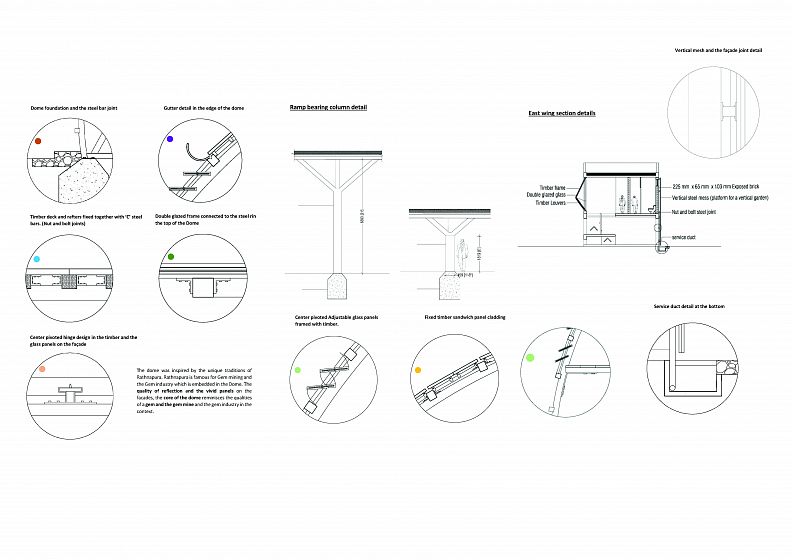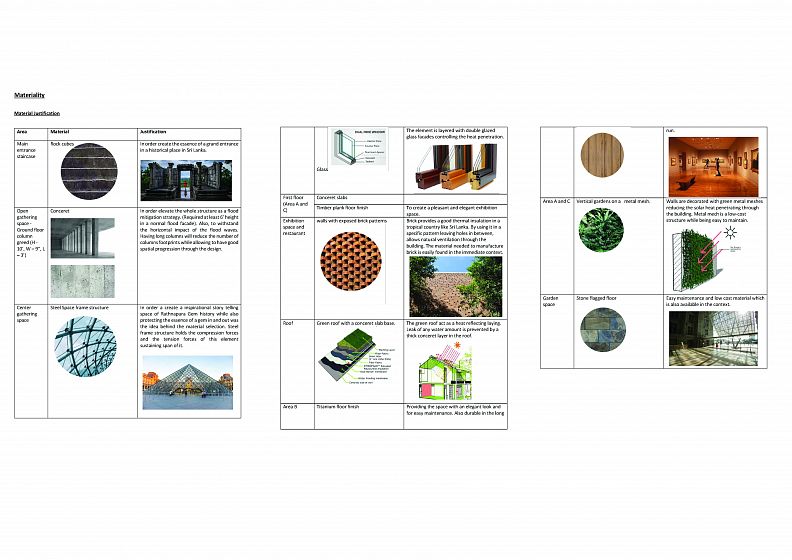Tourism Awareness Center

Project idea
Design approach
Problem identification
The proposed site is in Rathnapura old town. According to the analysis of the micro context, Rathnapura old town is often Neglected by the tourists due to the following points in the present,
1. Existence of the different shortcuts leading to main tourist destinations without arriving at the town. Ex – Adam’s Peak, Sinharaja rain forest
2. Town represents a compact urban arrangement which makes it an unpleasant environment.
3. Lack of open spaces, parks, and facilities for the public sector.
4. Lack of informative centers for the tourist industry.
5. Town does not represent a significant identity as a place consisting of attractive buildings holding a unique architectural language.
Even though the town is been degraded in many ways in the present, it is hiding a great depth of values in terms of history, culture, religion, and environment which should be brought up from a fragile mess. For an instance, Rathnapura old town manifests many places with historical values which is not considered much by the tourist due to the lack of interest regarding arriving at the town itself. By this, travelers unknowingly miss the hidden history in the town such as old caves which go back 5000 years where the human civilization in Sri Lanka has emerged. (Batadomba Cave) Apart from this the architecture and stories from the colonial periods can be witnessed in many places in the town.
Critical argument
These places in Rathnapura old town should be brought up and presented in a well-mannered way where the travelers would identify the importance of each space and they will be oriented correctly on the right path before they begin their travel. Even outer parts of the town represent many places as mentioned above which needs a clear direction and a travel plan that can accompany the traveler correctly. For this matter, there should be a place which acts as a tourist awareness point that caters every information about the tourist destinations in and out of Rathnapura old town covering all of Rathnapura, so that traveler can have their travel plan before visiting the significant places in Rathnapura.
Solution
The solution for uplifting the Rathnapura old town while also upbringing the known and unknown significant destinations is to establish a tourism awareness center in Rathnapura old town. This should be the ultimate solution for unrealized and non-educative travel through the Rathnapura area. The Tourism awareness center will be the core informative hub for all the local and foreign tourists reminiscing the whole essence of Rathnapura. It should manifest the Religious, cultural, and environmental importance of the place carrying a guideline of the places someone should visit.
Concept
“Flowing through the Undeniable significance”
Project description
The site and the building form
When it comes to architectural arrangements the building should be responding to the site which is mandatory. The site is surrounded by the public roads from three sides which brings the potential of street facades that formed the building a triangular-shaped one. The building would break the compactness of the existing urban arrangements while creating a permeable new public space on the ground level. This also caters to the flood conditions that might occur in this specific area throughout the year.
Design Philosophy
While considering the shape of the site the building is representing three blocks, two acts as the street façades. These three elements represent the Religious, cultural, and environmental significance of Rathnapura which is filled with mandatory information of unique places that someone should visit. The places are categorized under these three aspects. (These categories and the destinations are indicated as a research section in this report further ahead)
Religion, culture, and environment symbolize the historical values and the present condition of a place. These aspects should be reflected in the future as well. It should be protected for the new generations to come. Keep that in mind, a reflective element in the middle of the triangle has emerged in the design as a form of a Dome. The Dome functions as the main entrance lobby to the building which inform and aware people about the building and the rest.
According to the climatic and contextual aspects, the maximum daylight gain to the building can be sustained by making the East wing of the building (From the three wings of the triangle) a transparent element rather than making the whole building a solid mass. Through having a combination of solid and void massing on the east wing, the maximum amount of daylight will be penetrating through it towards the dome, the rest of the public spaces, and the building spaces on the first floor. The East wing shall be the environmental sector of the building which greatly suits the identity of function as it is the more organic and transparent element representing the feeling of nature.
Technical information
Ground floor plan
The ground floor is permeable space which edged with “V” shaped structural columns giving an essence of strength, boldness, and establishment. The first floor is elevated from the ground due to the natural flood hazards that may occur in the context. The ground floor contains only temporary spatial functions that can be adjustable during a flood condition. Due to this most area in the Ground level is public. Ground-level also contains the security hut and small accommodation, cultural food center, and traditional handicrafts, ornament sales. In the middle space and around the Dome is open for theatre. There is a road placed behind the building used for services which connected to the upper level by ramps.
First-floor plan
This level contains the most important sectors in the building. It divides into four parts mainly. The Dome, Religiose sector, the cultural sector, and the environmental sector provides the travel information needed for each destination. After passing the wide staircase the user may arrive at the Dome which is the main entrance lobby. This space is the main information center which provides the user with the right guidance of the building. After that, the user may enter the exhibition space which starts from the religious significant sector. Next is the cultural sector which the user arrives passing the washroom facility. At the end of the cultural exhibition space, is the restaurant centralized around a tree coming out from the pond below which symbolize the starting point of the environmental sector. After a cup of tea, the user may enter the final exhibition space which quite breaks the rigidity of the building in terms of the spatial essence to reminisce the natural quality inside the building. Users may find this space as a soothing environment to end the journey through the building.
Roof plan – Rooftop garden
Rooftop is a public garden that acts as a recreational space which Rathnapura old town very much needed. The community may find this as the much-needed public hangout space for picnics and for leisure. Essential services such as water tanks and the starting point of water drainage ducts are allocated at this level.
According to the capacity of the outside and the inside of this building, it facilitates 400 - 500 people at once. Exhibition space facilitates for 200 people at once. This building area captured about 1041 Sqkm of floor area.
Wastewater management and Water supply service line layout
A wastewater drainage line is established below the ground level starting from the east side of the building. The waste is carefully collected to the soakage pits and the septic tanks that are allocated away from the building users for easy maintenance and cleaning. On the roof garden, water tanks are established for water consumption of the building.
Rainwater management service line layout
As a tropical country rain is a much-expected condition. In this case, the rooftop garden consists of a rear water drainage line that directs rainwater into underground waterways.
Passive Solar power supply & artificial electrical Supply & service lines
Passive solar energy is used in the building as a strategy implemented in many countries which are close to the equator. Through this, a considerable amount of electricity is generated for the usage of the building.
Environmental strategies
The below illustration is a clear indication of the sun's direction and the sunray impact on Dome and the triangle mass. As a tropical country, it is expected that throughout the year the maximum amount of daylight with a higher angle will be gained.
Passive strategies for low energy consumption
Natural Daylight penetration is maximized by introducing new spatial and structural arrangements. The dome is quite a transparent talent mixed with Timber and glass panels that allows daylight to the interiors. In the corners of the triangle building, there are lightwells created with transparent interior facades in order to link the interior with the exterior through gaining daylight. This will reduce the sum of the building's energy consumption.
Neutralizing excessive heat gain
Excessive heat gain is limited by arranging timber panels on the top in the Dome while attaching double-glazed glass panels. Most of the timber and glass panels are louvered and pivoted allowing natural winds inside to create thermal comfort. Vertical gardens are created on the rear side of the building controlling the excessive heat.
passive ventilation strategies for low energy consumption
The whole building naturally ventilated by having louvered timber panels and pivoted glass panels. Having a roof garden helps to reflect excessive heat going inside the building. Dome represents stack ventilation going strategy through its core While the other parts of the building show a cross ventilation method. At the corners of the rectangular mass, ponds are allocated to provide a cool breeze.
passive building elements used in the design – ventilation, and shading
The entrance is designed with a roof that has a shading element overgrown by the vegetation that comes from the top roof garden. It will provide natural shadow patterns in the entering point. The dome and Corner of the building are designed with stack ventilation methods. The natural air is oriented through the main spaces such as restaurants and other gathering areas using the cross-ventilation method.
Passive building elements used in the design – passive Light gain
Windows and transparent opening are acting as shading devices themselves on the facade. Dome as well as the building surrounding it is decorated with timber louvered facades and adjustable glass windows. These windows are unique which are specifically designed according to the concept of this design to gain maximum natural light and ventilation.
Passive building elements used in the design – Materiality, and elements
The shown brown facades are finished with locally made bricks to sustain a specific thermal comfort inside. Timber louvers are always a support element in maintaining constant heat in the building. The roof garden is finished with grass which acts as a thermal barrier. The usage of double-glazed glass was helpful in reducing excessive heat gain.

